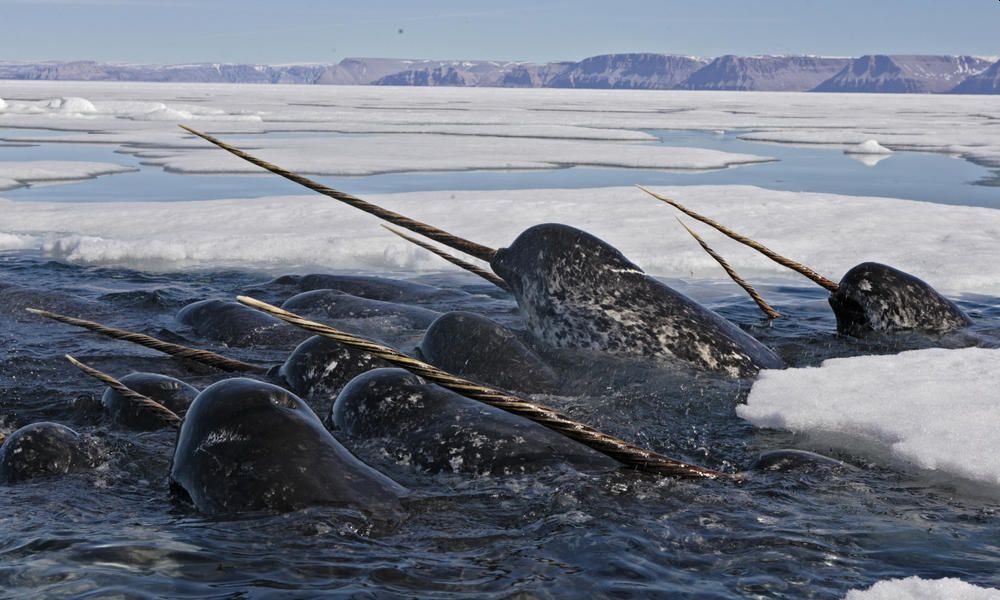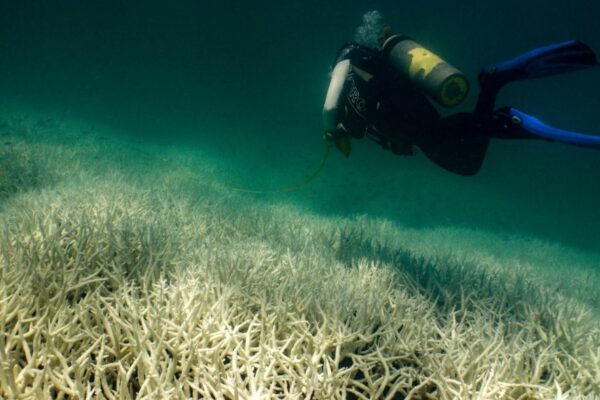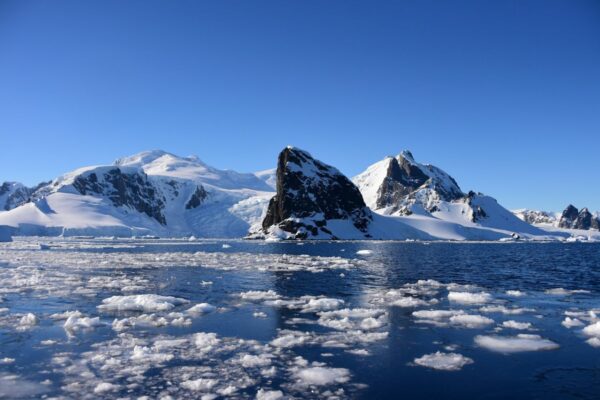Narwhal Tusks Reveal Effects of Climate Change and Mercury Levels in the Arctic
Changing climatic conditions have profoundly affected the Arctic, resulting in rising temperatures, loss of sea ice, and melting of the Greenland ice sheet. A recent study has discovered that Narwhal tusks reveal a great deal about the effects of climate change and mercury levels in the Arctic.
Published in the journal Current Biology, the study stated that climate change poses a grave threat to Narwhals in the Arctic. A group of scientists has been studying Narwhal tusks to help understand more about the impacts of changing climate. They found that the reduction in sea ice and increase of mercury in the water has had a big effect on narwhals.
This species of whale is sometimes referred to as the unicorns of the sea, owing to the long tusk sticking out from the head of male members. These tusks are significant, and function like the rings inside tree trunks. Each year narwhal tusks grow a new layer, and by studying these layers scientists can learn about where and what the whales have eaten, and about their environment.

A recent study has discovered that Narwhal tusks reveal a great deal about the effects of climate change and mercury levels in the Arctic | Image: Paul Nicklen / WWF-Canada
The team examined the tusks of ten narwhals living in northwest Greenland to discover how dangers like climate change, melting sea ice, and increasing mercury levels have impacted the species. Narwhals can live for over 50 years, which offered an advantage for the scientists as they were able to study the effects of changing climate over this time.
Professor Rune Dietz, from Aarhus University in Denmark, who led the study, said,
It is unique that a single animal in this way can contribute with a 50-year, long-term series of data. It is often through long time series that we as researchers come to understand the development of biological communities, and such series of unbroken data are very rare. Here, the data is a mirror of the development in the Arctic.
It was discovered that prior to the 1990s, narwhals mostly ate Arctic fish like halibut and Arctic cod, which are found in abundance in the icy waters. However, between 1990 and 2000, the sea ice in Greenland started to decline and the narwhals began to eat fish that were from the open ocean instead, like capelin and polar cod. The shift in the species’ diet shows how animals were moving to new parts of the ocean.
Moreover, from 2000 onwards, the amount of mercury, which was found in the narwhal tusks, accelerated drastically. The scientists believe that this increase in mercury might have been triggered by high levels of fossil fuels being burnt in areas like Southeast Asia, and a warming climate, which has caused alterations to the sea ice levels and mercury cycle.
Dietz further added that the narwhal is most affected by climate change in the Arctic; and as they don’t get rid of mercury by forming hair and feathers like their counterparts, analyzing their tusks helped a lot in understanding more about the effects of the phenomenon on the species.


